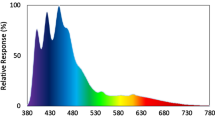Abstract.
The process of microsclere secretion was examined in vivo through glass coverslip implants in three species of the genus Mycale from São Sebastião channel, southeastern Brazil: Mycale (Aegogropila) angulosa, Mycale (Arenochalina) laxissima, and Mycale (Carmia) microsigmatosa. All three species adhered well to coverslips and developed normally through at least 2 weeks. Similar experiments with different species (Cinachyrella alloclada, Amphimedon viridis, Haliclona melana, and Aplysina caissara) were also successful with one exception (the cartilaginous Chondrilla nucula), indicating that the method can be applied to most demosponges. Microsclerocyte size varied according to the type of microsclere secreted, but all were elongated to fusiform and had small, anucleolated nuclei. Spicules were transported by microsclerocytes alone, without any other cell type ("helper cells") involved. Secretion of a microsclere was performed by a single sclerocyte. Although some axial filaments were found free in the mesohyl, all microsclere secretion in these animals was fully intracellular. Normal axial filaments were observed in most types of microscleres of the Mycale species (sigmas, toxas, and microxeas). Timed observations of sclerocytes suggest that immature spicules with the aspect of short straight rods with thick ends might be the precursors of the anisochelae. Observed differences in the size versus number of toxa secreted may indicate either the presence of two distinct subpopulations of toxa-producing microsclerocytes or that the initial number of axial filaments at the beginning of silica deposition may determine the final size of the spicules. Although other microscleres such as sigmas and chelae are secreted in a one cell–one spicule basis, several toxas and microxeas can be secreted simultaneously in a single cell.
Similar content being viewed by others
Author information
Authors and Affiliations
Additional information
Electronic Publication
Rights and permissions
About this article
Cite this article
Custódio, M.R., Hajdu, E. & Muricy, G. In vivo study of microsclere formation in sponges of the genus Mycale (Demospongiae, Poecilosclerida). Zoomorphology 121, 203–211 (2002). https://doi.org/10.1007/s00435-002-0057-9
Received:
Accepted:
Issue Date:
DOI: https://doi.org/10.1007/s00435-002-0057-9




